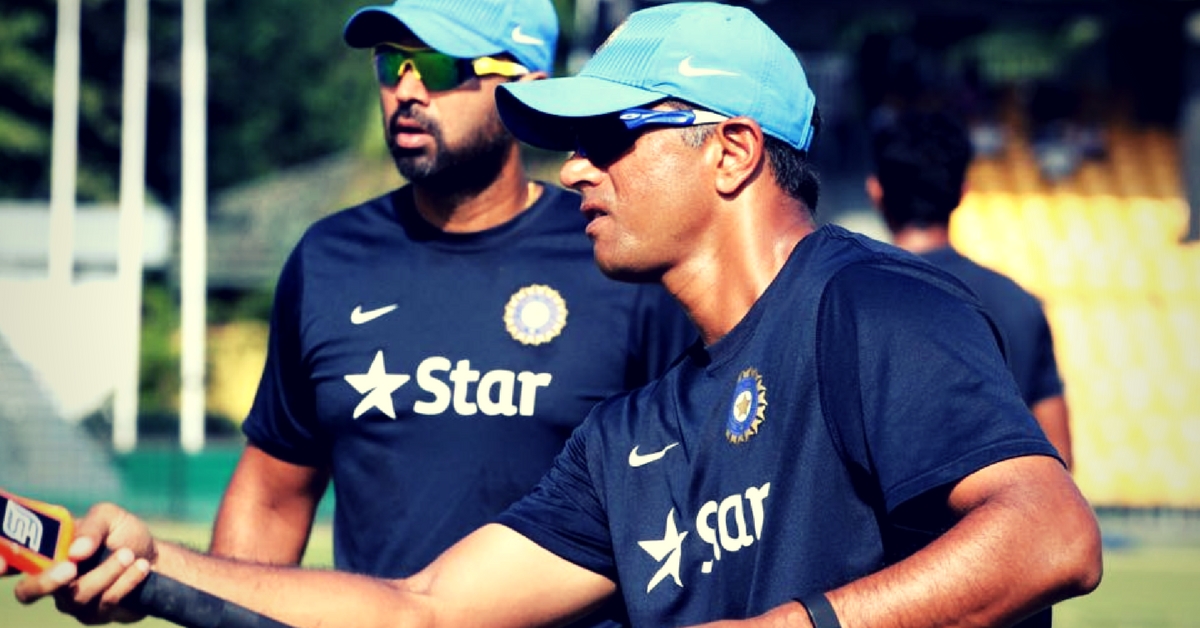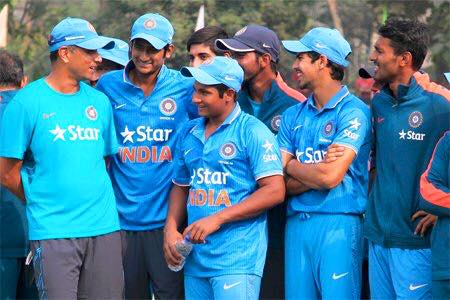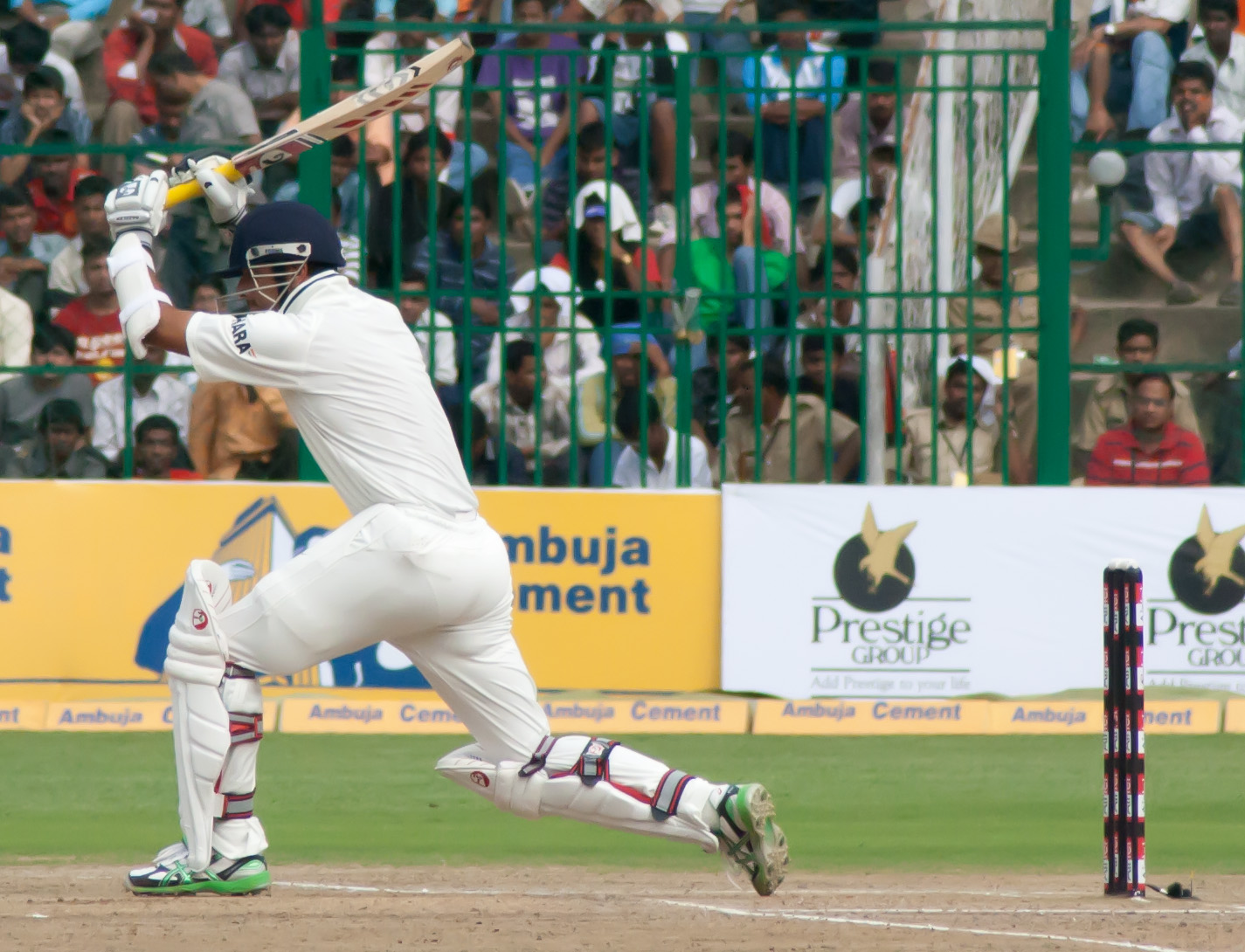Rahul Dravid: A Toast To the Brilliant Mind Behind India’s U-19 Team
Superbly guided by Dravid, the Indian cricket team defeated Pakistan by a whopping 203 runs to storm into the final of the U-19 World Cup!

The Indian cricket team’s stunning win in the Under-19 World Cup has lit up the country.
It’s only fitting that this crop of talented youngsters is being led by one of cricket’s all-time greats and probably the most articulate sports personality India has ever seen. His name is Rahul Dravid, and he needs no further introduction.
This is the second time Dravid has led India to the Under-19 World Cup final. In 2016, India lost to West Indies in the final. It is hard to find anyone better than ‘The Wall’ to nurture the future of Indian cricket.

His career in the professional game will testify to it. Despite his obvious talent, Dravid understood his limitations, worked on them and maximised his potential through sheer will, grit, courage, knowledge and conviction. Of course, having a great career in the game is no guarantee of success in coaching. There are numerous examples one can cite.
Evidently, Dravid isn’t one of them. From his playing/mentorship stint with the Rajasthan Royals IPL franchise, where he nurtured the likes of Karun Nair, Sanju Samson and Dhawal Kulkarni, to coaching stints in India ‘A’ and the under-19 side, Dravid’s influence on the future is already apparent.
While preparing the Indian colts for the 2016 edition of the Under-19 World Cup, Dravid requested the BCCI to arrange practice matches against the Board’s President XI, which he believed should have players with experience in international cricket. Facing off against players who have played for the senior team like Jaydev Unadkat and Abhinav Mukund, among other domestic regulars, the under-19 side won by 23 runs.
During the tournament itself, the team management created a montage of all the players in action. This was motivation for the players to trust themselves and play their natural game. The results were evident. Even when India lost in the final, Dravid said, “You are the champions for me.” Little surprise that later that year, his side won the under-19 Asia Cup.
“The great players I have played with and the people that I have had the honour to play against know how to fail well. We have often heard ‘failure is the stepping stone to success,’ but it’s just that you can fail badly and can also fail well. Failing well is very, very important,” Dravid once said.

As coach of the India ‘A’ team, Dravid understood his remit, which was to reinforce the bench strength of the Indian cricket team. Here the emphasis was to ensure that as many players at this level got a chance to make the step up and play in the senior side. One of the real beneficiaries of Dravid’s coaching stint with India ‘A’ side was Hardik Pandya.
“For me, everything changed after my tour of Australia with the India ‘A’ team. It is a tour that transformed me as a cricketer. I can’t but thank Rahul Dravid enough for his contribution. I understood that there is a mental aspect about the game that needs to be worked upon. He (Dravid) made me mentally stronger,” Hardik said to DNA.
Besides Pandya, other beneficiaries of this system were Kedar Jadhav, Yuzvendra Chahal, Shreyas Iyer, Jayant Yadav and Manish Pandey. With the exception of Iyer, the rest have gone on to play for India, and a few have even become mainstays.
“I don’t think a good coach should expect the people who he’s working with to listen to everything he says. A good coach will like someone who’s willing to learn. He might be the quietest in the team; he might not take everything you say but will be open to learning. That’s what coaches look for,” he once said at an event for a sporting non-profit.

What fascinates many, including this writer, about Rahul Dravid, is his erudition and ability to see and understand the game beyond the boundary line.
His famous speech at the Bradman Oration in Canberra, for example, is a classic example of these attributes. For the purpose of brevity, however, this article will look back on the insights he delivered into junior cricket and how the modern game is run at the grassroots level during a speech at the MAK Pataudi Memorial Lecture in December 2015.
The game which he grew up playing isn’t the same today, especially in the cities and small towns. What Dravid offers is essentially a blueprint for the future of junior cricket in India in an era when children in small towns and big cities can access other sports.
He goes on to articulate some of the problems afflicting cricket at the academy level. At the very beginning, when children are first exposed to the game at the age of 5, 6, or even 7, Dravid says academies must “make sure that their first engagement with the game starts with having a good time” and not “stuck into the nets and obediently do drills.”
“There must be strict guidelines as to what a child does at an academy—what age group plays with what ball, how many yards do they bowl from, how many overs they bowl and what the coach to child ratio must be. I sometimes see nine-year-olds being made to bowl 22 yards which is terrible for them – in terms of the load on their bodies and the shortcuts they take to get to the other end,” he says.
Cricket, he says, at this level should be about increasing participation, and letting them just enjoy playing the game. “If the five to seven-year-old is well taken care of in our academies, we are not going to lose their talent,” he adds.
Going up the ladder further to the age-group tournament level, where matters tend to get a tad more serious, the blueprint is more of the same. “At age group tournaments of this level, there need to be strict guidelines to allow more children to participate, rather than have the more accomplished kids to rack up big centuries. Those are important, yes, but in selection matches or zonal games,” he says.
He illustrates these points with potential solutions, delving into important details, especially for kids who cannot afford to pay the fees for these academies.
As the child enters high school, Dravid recommends counselling sessions for all Under-16 state cricketers about the life options ahead of them. He advocates against giving up studies not entirely because of a requirement for a fall-back option in case the game does not work out, but to also have a life outside the game. This, he believes, is absolutely necessary to deal with the intense pressures of the modern game.

There are insightful pointers for parents, coaches, young cricketers, but there was one thing that really caught this writer’s attention.
“From turning a young cricketer into a confident sportsman and a responsible adult, the obsession with results can have a diametrically opposite effect. As coach of the India U-19 team, over the last few months, I have seen quite a few youngsters and many, many matches. When I hear about some under-19 bowlers being reported for a suspect action, it upsets me deeply. What were the coaches doing until the boy got to that age: 17-18-19? Did his faulty action begin at the age of 10 years old, because his coach had him bowl the full 22 yards? Then as he grew up did his next bunch of coaches just let it go because the boy kept getting wickets and winning tournaments?” he asks.
Obsession with results at a junior level, Dravid argues, has a terrible spillover effect on the game at the institutional level, with scores of overage players playing in age-group tournaments. Understanding this facet (why obsession with results is unhealthy) is central to the development of a thriving ecosystem for young athletes across all games.

There is so much more to the speech, which you can read here. As someone who understands the trials and tribulations of the modern game, and witnessed it develop into the media-crazy money-making behemoth it is today, Dravid is uniquely placed to nurture the future of Indian cricket.
However, as he says, the game is still about performance. The Under-19 team’s victory in the final will be the perfect affirmation of his contribution.
Like this story? Or have something to share? Write to us: [email protected], or connect with us on Facebook and Twitter.
NEW: Click here to get positive news on WhatsApp!
If you found our stories insightful, informative, or even just enjoyable, we invite you to consider making a voluntary payment to support the work we do at The Better India. Your contribution helps us continue producing quality content that educates, inspires, and drives positive change.
Choose one of the payment options below for your contribution-
By paying for the stories you value, you directly contribute to sustaining our efforts focused on making a difference in the world. Together, let’s ensure that impactful stories continue to be told and shared, enriching lives and communities alike.
Thank you for your support. Here are some frequently asked questions you might find helpful to know why you are contributing?


This story made me
-
97
-
121
-
89
-
167











